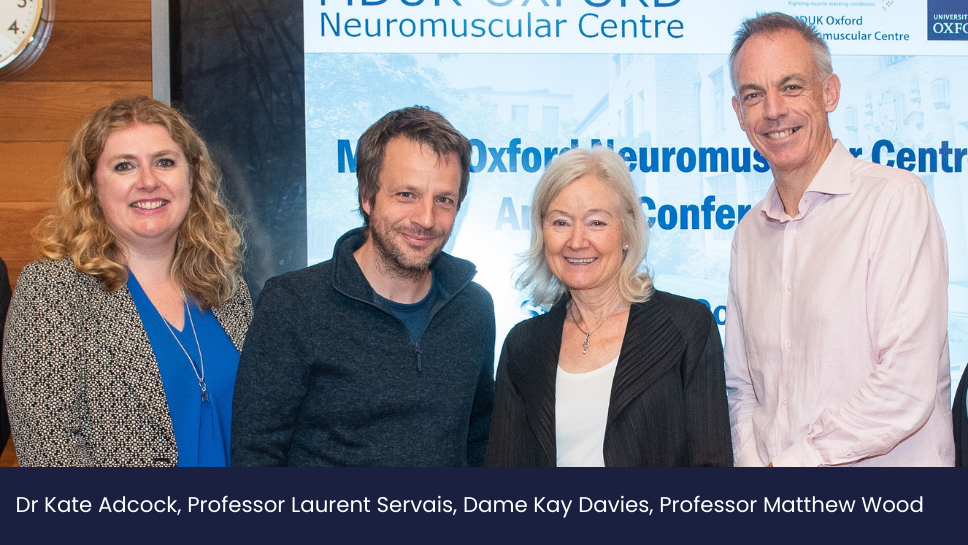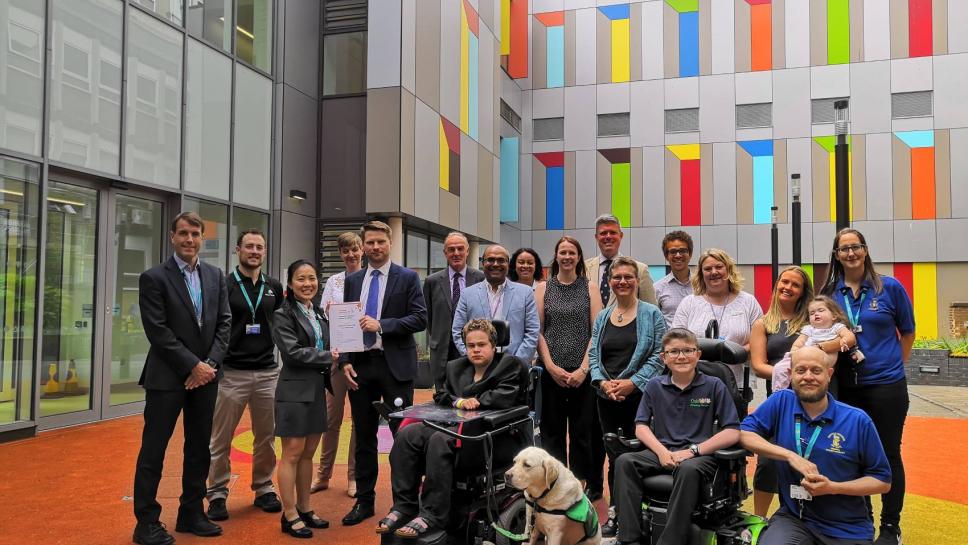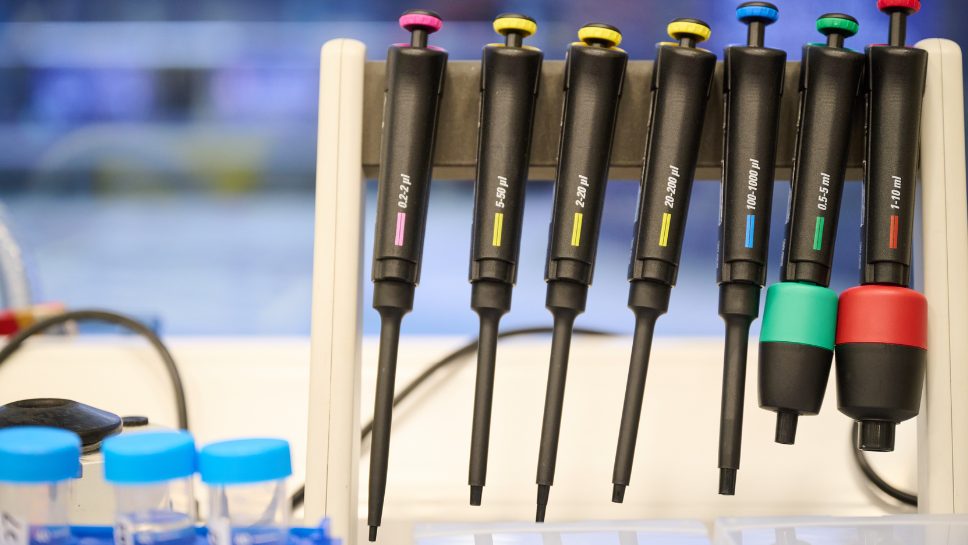In January 2019, we partnered with the University of Oxford to form the MDUK Oxford Neuromuscular Centre to drive forward the development of new therapies and treatments and increase the capacity of clinical trials for muscle wasting and weakening conditions in the UK.
The Centre, with Professor Matthew Wood as its Director, and Professor Kevin Talbot and Dame Kay Davies as co-Directors, brought together researchers and experts from across existing sites in Oxford and further afield, with the goal of making Oxford the third hub for muscular dystrophy research in the UK − along with London and Newcastle.
As part of our ongoing partnership, we’ve invested over £1.2 million into the centre over the past five years. During that time, the centre has made significant progress on the goals and milestones it set out to achieve.
To celebrate the centre’s fifth anniversary, we’ve outlined some of these fantastic achievements:
Significant growth in Oxford’s clinical trial capacity
Before the centre was set up, almost no clinical trials for muscle wasting and weakening conditions took place in Oxford due to a lack of expertise and infrastructure, including space, equipment, and other things that facilitate clinical trials, amongst other challenges. Since our investment, and thanks to the recruitment of Professor Laurent Servais, Professor of Paediatric Neuromuscular Diseases, there’s been a significant growth in Oxford’s clinical trial capacity. Today, over 20 clinical trials are either in progress or being set up. These include both interventional, checking if a drug works, and observational, natural history studies, trials.
Dedicated space for new clinical trials for children
In 2019, there was an urgent need for dedicated clinical research facilities where clinical trials for children could safely take place. Thanks to the local NHS Trust and the centre this has changed, and facilities are now available. Even better, the number of these is likely to increase over the coming years, helping to further build the capacity and ability to carry out clinical trials in children with muscle wasting and weakening conditions, as well as other childhood conditions.
A state-of-the-art newborn screening programme
Professor Laurent Servais has set up a state-of-the-art newborn screening programme for spinal muscular atrophy (SMA), the ongoing pilot of which is in Thames Valley. The newborn screening programme aims to screen a minimum of 10,000 newborn babies for SMA each year over three years. This work also extends well beyond Oxford, with several regions involved in the pilot study. This will provide evidence in support of a UK national screening programme for treatable muscle wasting conditions.
Every baby in the UK is offered screening tests for various conditions in their first week. Currently, SMA is not one of the conditions screened for, despite being included in many other countries’ newborn health checks. While most babies are healthy, for babies who do have a health problem, the benefits of screening can be lifesaving. This is the case with SMA – a condition that a baby is born with every five days in the UK. Treatment before symptoms start is vital. Once a child starts to show symptoms of SMA, there is already irreversible damage to the nervous system, which affects muscles and movement.
“This study represents a unique platform in the UK that we hope will change clinical care for children with SMA now that there are three possible treatments for the condition either recommended by NICE for use by the NHS or in the process of being appraised. Setting the standard of early detection and management of SMA will be a good example for other conditions, such as Duchenne muscular dystrophy’’ Professor Laurent Servais
New therapies in development
The centre has been developing new therapies and treatments for several muscle wasting and weakening conditions. This was a key priority and aspiration from the beginning.
Molecular patches
One of the most prominent achievements of the centre was the development of a drug from ‘bench-to-bedside’ – going from basic research all the way to clinical testing. Working with Wave Life Sciences, Professor Wood and his team have developed a new antisense oligonucleotide (or molecular patch) called WVE-N531. This is a potential treatment for people living with Duchenne muscular dystrophy (DMD) and is currently being tested in an early phase clinical trial by Professor Servais. The potential treatment works by skipping over genetic changes in exon 53 that cause DMD.
More molecular patch therapies for DMD and myotonic dystrophy type 1 (DM1) are also in development with a pharmaceutical company.
Increasing the production of utrophin
Professors Kay Davies and Angela Russell are developing new treatments to help increase the production of utrophin in people with DMD. Utrophin can replace the function of dystrophin, which isn’t being produced in people with DMD.
Progress on development of other therapies
Professor Carlo Rinaldi and his team are working on developing a new gene therapy to treat spinobulbar muscular atrophy (SBMA), while Professor David Bennett’s team is looking for treatments for hereditary sensory neuropathy type 1 (HSN1).
Five successful years
These achievements have established Oxford as one of the leading centres for muscular dystrophy research in the UK.
Catherine Woodhead, Chief Executive of Muscular Dystrophy UK said: “We’re extremely proud of how far this partnership has come in the past five years. It’s exciting to see treatments developed in Oxford laboratories being part of a clinical trial, and even more exciting that Oxford itself is one of the trial sites. Such an increase in the number of clinical trials is something that we had not imagined five years ago. The MDUK Oxford Neuromuscular Centre and its dedicated team have achieved some incredible advances which hold real promise for people living with a muscle wasting condition, particularly especially children, who will particularly benefit from newborn screening for with an available treatment for SMA.”
Professor Matthew Wood, Professor of Neuroscience at the University of Oxford and director of the MDUK Oxford Neuromuscular Centre, said: “Celebrating the remarkable journey of the MDUK Oxford Neuromuscular Centre, we’re proud of the success the centre has achieved in the last five years. With over 20 clinical trials currently ongoing or in preparation, as well as several new treatments in development, we’ve elevated the centre to the top three centres for neuromuscular research in the country.”
We’re incredibly grateful for the amazing support we’ve received from the many major donors who have helped fund the MDUK Oxford Neuromuscular Centre. With special thanks to the Q Trust, led by Charles Scott and Charles Manby MBE.





